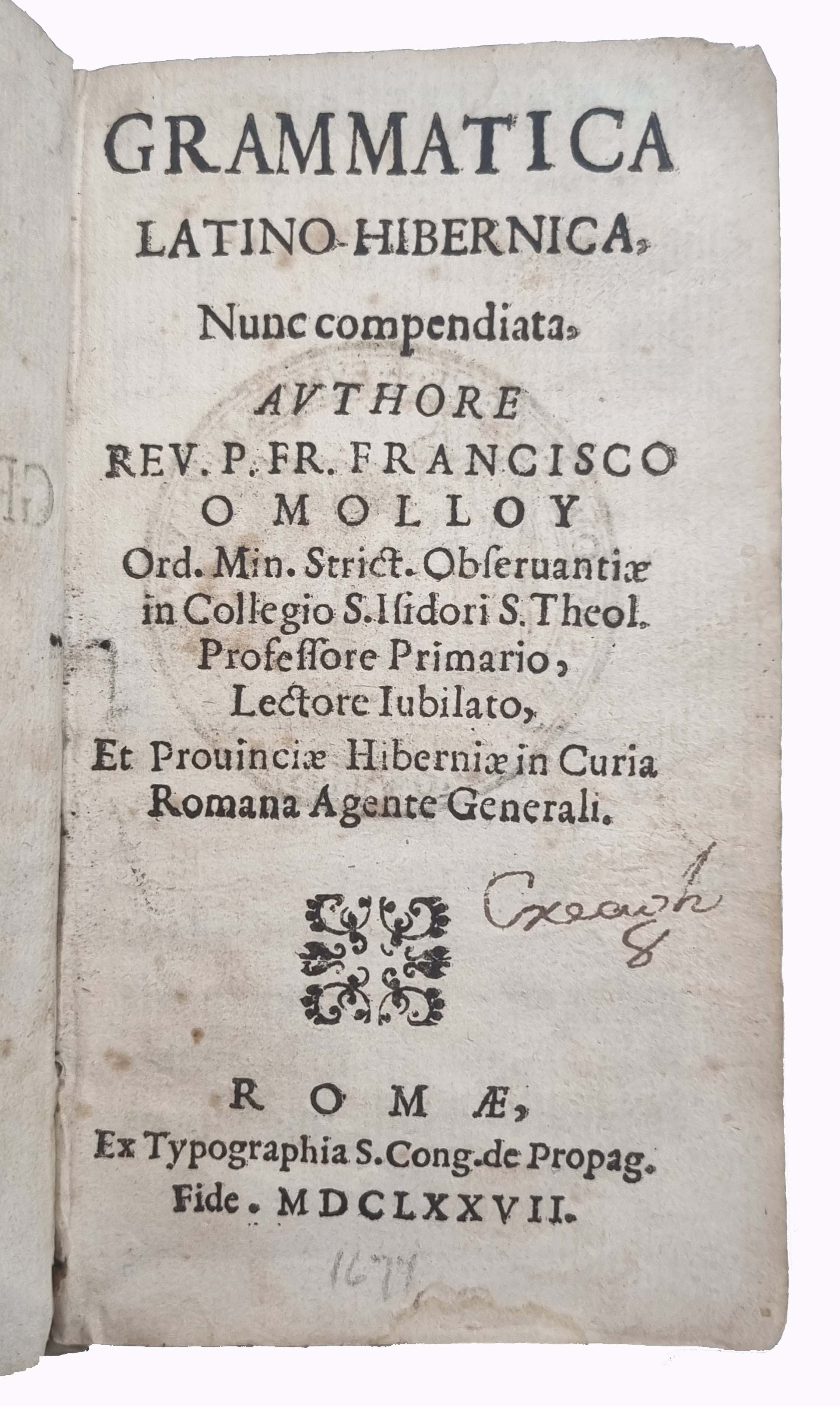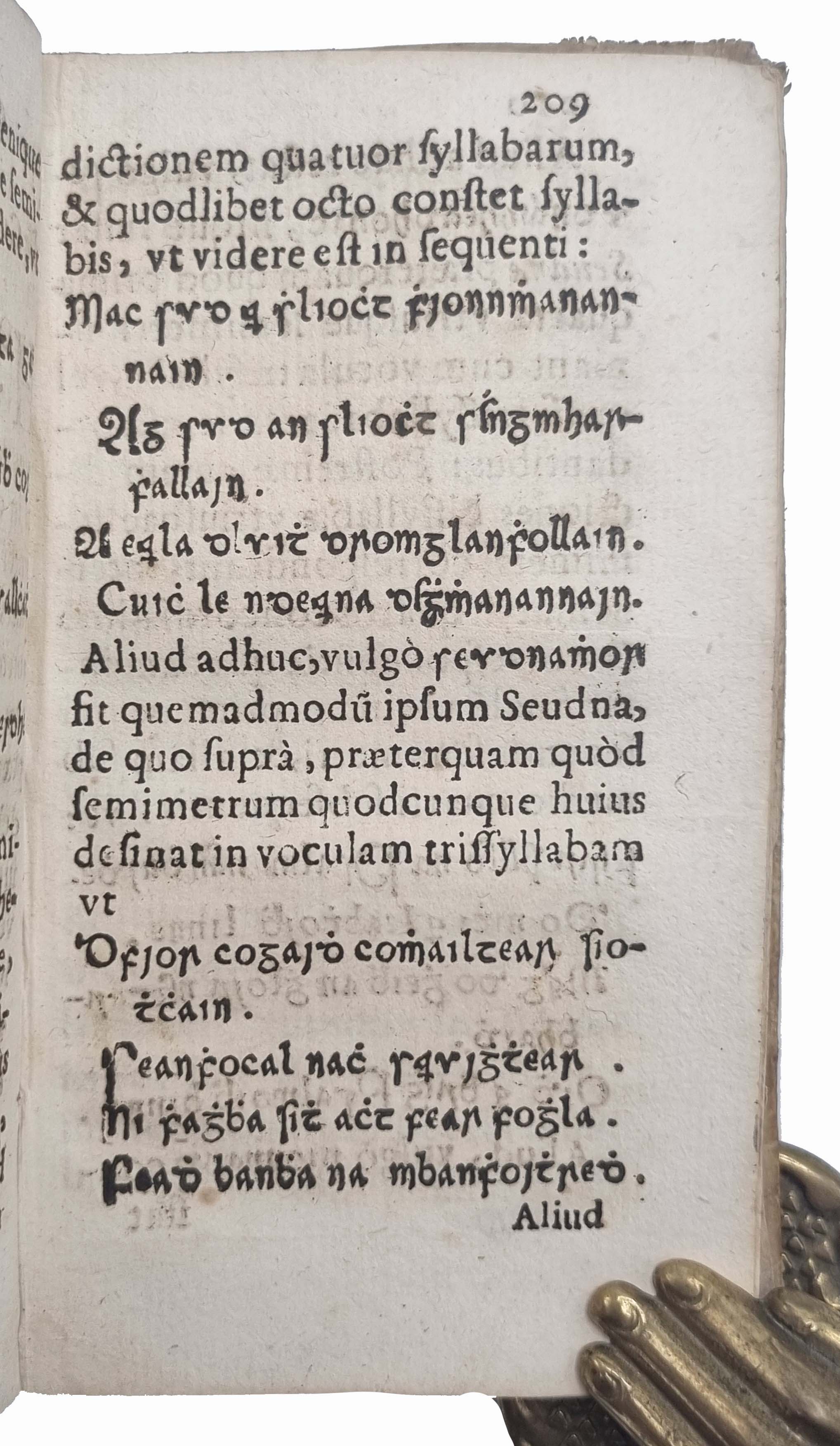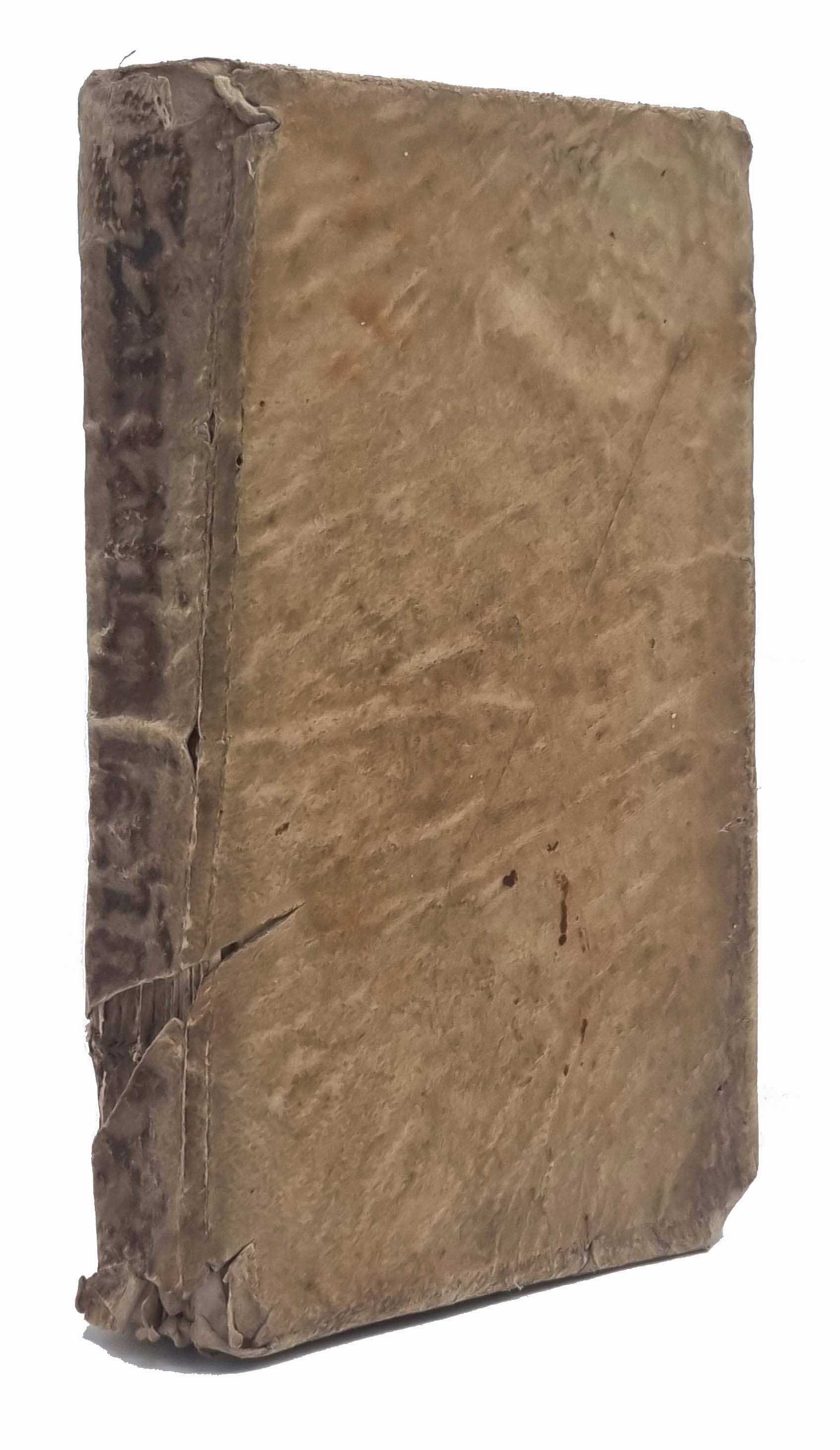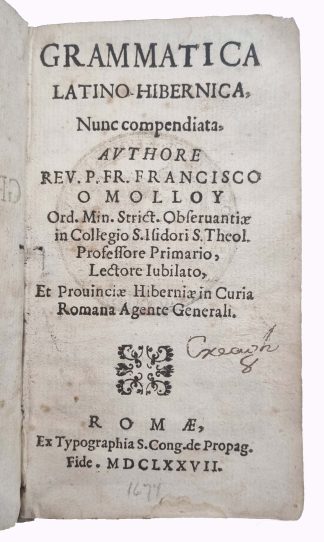FIRST PRINTED IRISH GRAMMAR
MOLLOY, Francis. Grammatica Latino-Hibernica.
Rome, Ex Typographia S. Cong. de Propag. Fide, 1677£2,500.00
FIRST EDITION. 12mo. pp. [12], 286, lacking last blank. Roman letter, with Gaelic. Woodcut printer’s device to title verso, decorated initials. Occasional toning, half of M2 (added dialogue in Latin verse) torn away. A very good copy in contemporary Italian vellum, early ms title to spine, hinges weakening, small loss to spine. Ms ‘William Hogan’s Irish Grammar Oct 21st 1828’ to half title, C18 ms ‘Creagh’ to title.
An unsophisticated copy of the first edition of the first printed Irish grammar, with an extensive examination of Irish bardic poetry. The Irish Franciscan Francis Molloy (Froinsias Ó Maolmhuaidh, d.1684) taught theology at the Roman College of St Isidore and in Vienna. In 1676, he published an Irish catechism, printed with Gaelic type commissioned by the Propaganda Fide and in use until 1707 (Lynam, p.11). Based on an extensive ms tradition dating back to early C17 grammars from Rome and Louvain, his ‘Grammatica’ left aside ‘the bardic divisions of grammar into focal, pearsan and iambéarla’, using instead a Latin model based on traditional humanist language teaching, and added numerous poetic examples.
Part I focuses in depth on phonology, morphology and syntax, beginning from the alphabet and pronunciation. It also discusses contractions and abbreviations, with a diagram exemplifying how they operate. Part II is devoted to prosody and poetic genres, metrical and non-metrical, and provides 57 poetic excerpts (with Latin translations), a third of which do not appear in previous Irish grammars or recorded poetic anthologies (Carroll, p.148). Written for Irish speakers in exile, ‘most of them […] not professional poets, these grammars would help readers to review the grammatical rules and pronunciation of Irish. The function of such texts was to provide not primarily an abstract analysis of grammar but rather a practical aid to the memory of Irish speech and writing’ (Carroll, p.146). It discusses types of Irish verse and metres (e.g., debide, seudnae) and parts of poems by Bruinlingeach, Oglach, with in-depth discussion of syllabation in bardic poetry, assonance, consonance, rhyme, diction, and alliteration. A scarce and most interesting work.
ESTC R216562; USTC 1713382. Best, Bibliography of Irish philology and of printed Irish literature, p.45. C. Carroll, Exiles in a Global City: The Irish and Early Modern Rome, 1609-1783 (2017); E.W. Lynam, The Irish Character in Print 1571 to 1923 (1968).






